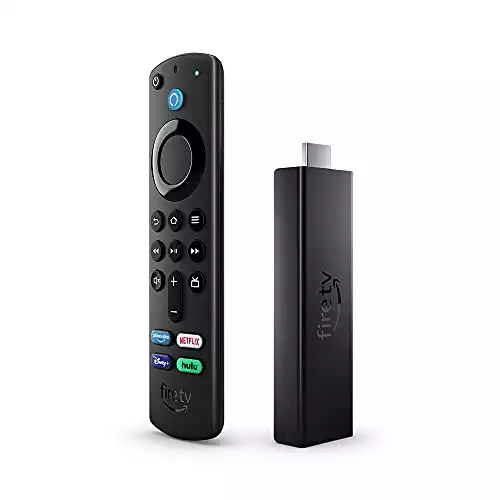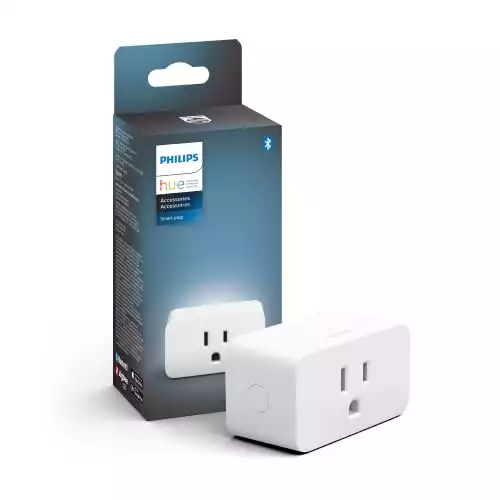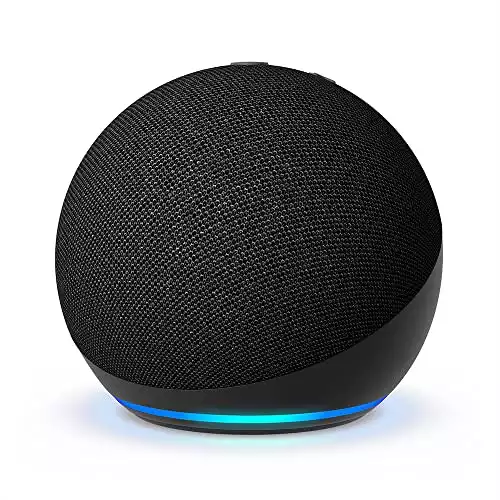This page may contain affiliate links. Please read my disclosure for more info.
Bringing a Roomba into your home is an expensive decision, but it also has the potential to save you a lot of time and hassle in your home cleaning. Are Roombas worth it? The answer won’t be the same for everyone, so let’s take a deeper look at how a robot vacuum would fit into your home.
In this guide, we’ll examine all of the advantages and disadvantages of Roomba ownership to help you figure out whether it’s time to add a robot vacuum to your home.
7 Reasons to Buy a Roomba
1. Roombas are convenient
There’s never a good time to vacuum. It’s a loud, boring task that just takes far too much time.
You have better things to do with your time. Or maybe you just don’t want to do it; I’m not here to judge.
On the other hand, a freshly vacuumed floor feels better on your feet. And regular vacuuming eliminates dust and allergens, making your home a healthier, better-smelling place.
2. Roombas can clean on a schedule
Most of us have forgotten a chore or two in our time, and we’ve all chosen procrastination over sweeping or vacuuming. The dust and dirt just keep building up in the meantime, with no respect for our busy lives.
Roomba doesn’t forget, and it doesn’t procrastinate. Every Roomba model has the ability to schedule one or more cleanings per day. You can even have unique schedules for each day of the week.
Robot vacuums can run with or without you, so your Roomba can be hard at work while you are busy binging Hulu or taking a much-needed nap. It can even run while you’re on vacation, letting you come home to a dust-free paradise.
3. Roombas can spot clean
You don’t always need a full-house clean. Even tiny, isolated messes deserve a rapid response. But they may not be worth the effort to get off your couch and pull your regular vacuum out of the closet.
Roombas have had a spot-cleaning option for a long time, but the latest models have really raised the bar for convenient cleaning of small messes. You don’t need to bring the Roomba to the cleaning zone anymore. You can simply instruct your Roomba to clean behind the couch, under the table, or wherever the mess is.
4. Roombas can clean when you can’t
There’s no good time for a mess, and they seem to appear at the absolute worst times. When your hands are full, or you just don’t have the time, you need an assistant like Roomba.
Recent generations of Roomba have gone hands-free. You don’t even need access to the app to get them going. Instead, you can issue Roomba voice commands from Alexa or Google Home. It doesn’t get much more convenient than that.
5. Roombas can clean all types of flooring
Early robot vacuums had a hard time with certain types of flooring. They often left thick carpet only partially clean, and some would scratch hardwood flooring.
Roomba has come a long way since those days. Recent models can handle virtually any type of flooring. Carpets, rugs, hardwood, laminate, and tile are all fair game for these vacuums.
Best of all, they can handle the transition from hard flooring to carpet and back all by themselves. You can thank Roomba’s patented multi-surface brushes. The flexible rubber is gentler than old-school bristle brushes while maintaining closer contact with the floor.
6. Roombas can clean under furniture
When was the last time you vacuumed under your couch? What about your bed? Dust accumulates in these places as much as anywhere else.
We tend to miss a lot of locations when cleaning, but Roomba goes everywhere that it can reach. Just think of all that hidden dirt and tell me that you don’t want a Roomba to help keep your home clean.
7. Roomba can pair with Braava for mopping
Even the most advanced Roomba can only vacuum your floor. But Roomba has a friend that can also mop. That friend’s name is Braava, and nearly every advantage we’ve discussed for Roomba is also an advantage of a robot mop.
You can even coordinate Roomba and Braava using schedules or voice commands. That way, Braava can mop as soon as Roomba is done vacuuming, ensuring that your floor is always at its cleanest.
7 Reasons Not to Buy a Roomba
1. Some Roombas are expensive
The original Roomba premiered at $200, and now you can buy a low-end model (like the Roomba 614) for even cheaper than that. But most people don’t want the baseline model.
iRobot has filled their more advanced Roombas with all kinds of useful features. You aren’t paying extra for a vanity paint job. The better Roombas have more powerful suction, auto-emptying dirt bins, and the ability to clean faster and more thoroughly by mapping your home.
Each of those features comes at a price, though. The highest-end Roombas cost about $1000. And you can add at least another $200 to that price if you want both a robot vacuum and a robot mop.
You probably won’t need to pay that much for your Roomba. But several of the most useful features we’ve discussed in this article aren’t available on Roombas that cost less than roughly $500.
2. Roombas can get stuck
Most of the time, Roombas are good at judging what furniture they can and can’t fit under. Sometimes, though, they get it wrong and end up getting trapped.
There are plenty of ways to prevent Roomba from getting stuck under your couch or bed. You can use keep-out zones on more advanced models or raised bumper guards on cheaper ones. You could even use furniture risers to give your robot vacuum a bit more room to maneuver.
Despite all those fixes, though, Roomba will likely get stuck at some point. It’s just a part of the robot vacuum owner experience, and it likely will be for a long time to come.
3. Roombas sometimes eat things they shouldn’t
Roombas try to suck up everything they see, just like a regular vacuum. The difference, of course, is that your upright vacuum doesn’t wander around on its own. The autonomy that makes Roomba useful can also make it dangerous.
You can’t let Roomba run free around small objects. A good rule of thumb is that anything small enough to be a toddler choking hazard is also a Roomba hazard. Worst case, you can always sift through Roomba’s dust bin later, but it’s easier to just pick up before letting Roomba run.
The bigger problem is how Roomba handles cords. Small cords can easily get tangled around Roomba’s wheels, and that can lead Roomba to pull at whatever the cord is attached to. There’s a reason so many of my tips for Roomba owners are devoted to securing cords and cables.
4. Roombas have small dust bins
Roomba dust bins hold between 1 and 3 cups of dirt (300–700 mL). If you run Roomba daily in a small home, that should be enough for a full run. However, large homes or homes with lots of foot traffic can easily produce too much dirt for a single Roomba run.
Having to empty Roomba too many times really takes away from its convenience. You can overcome this issue by getting a Roomba with a self-emptying bin, but that adds to the cost. Even the cheapest self-emptying Roombas typically run $500 or more.
5. Some Roombas can’t handle long hairs
This isn’t a Roomba-specific issue; long hairs are tough on every vacuum. Roomba’s rubber brushes handle these hairs better than bristle brushes, but they’ll still get tangled over time.
Worse, the long hairs can get wrapped around Roomba’s wheels, especially the big castor wheel. The Roomba S9 is the first Roomba to (mostly) solve this problem with one simple innovation: they moved the wheel. Instead of having the wheel out front where it hits the hairs directly, it’s now behind the brushes where it’s largely protected from running over hairs.
6. Roombas can’t clean everywhere
Your Roomba won’t be able to clean under low-lying furniture, although you can fix some of that with furniture risers. It also won’t be able to maneuver into tight spaces. Basically, if you ever need to move an object to vacuum somewhere, Roomba won’t get that part of the job done.
That doesn’t make Roomba completely useless. Most vacuuming happens out in the open or under fairly tall furniture. Just remember that your robot vacuum is going to need help if you want it to do a full clean.
7. Roombas sometimes get lost
Sometimes, Roomba forgets how to return to its charging dock. It’s battery may die before it gets all the way there, leaving you to pick up your Robot friend and help it find its home.
Roombas are lightweight, so that’s not a terrible ordeal. It will take several hours for Roomba to charge from a dead battery, though, so a lost, dead Roomba can severely slow down your cleaning.
Since the advent of their Imprint Smart Mapping technology, Roombas have gotten a lot better about finding their way around. Now, they memorize the layout of your home, including the location of their home base. You can even use Roomba on multiple floors since it can store several floor plans in its memory.
Even with smart mapping, Roomba can get confused if you move your furniture around. If its typical path is blocked, even the most advanced Roomba can become a lost little robot with no idea how to get home.
Which Roomba Is Best?
You should weigh each of these pros and cons when deciding which Roomba to buy for your home. Here are a few recommendations to help guide you:
- Small homes with little foot traffic can get away with the budget models like the Roomba 694.
- Medium-sized homes likely require a Roomba i3 for minimal dirt or a Roomba i3+ for medium-to-heavy amounts of dirt and dust.
- Large homes usually need the advanced mapping features and auto-empty bin of the Roomba i7+.
- Homes with multiple shedding dogs could benefit from the improved design of the Roomba S9+.
Roomba Alternatives
Roomba isn’t the only good brand in robot vacuums. Several vacuum companies have entered this arena, as have new companies that specialize in robotics or specifically in robot vacuums.
These brands are probably worth considering if you can’t find what you’re looking for from Roomba:
Each of these brands has its own pros and cons. Roborock has one of the most powerful 2-in-1 robot vacuum/mop combos. Eufy has done great things with budget robot vacuums.
At first glance, Shark vacuums are a lot like Roombas, but their mid-tier vacuums have different feature priorities than Roomba. For instance, if you compare the Shark IQ vs Roomba i3+, you’ll find more advanced mapping features in the Shark vacuum but faster charging and better allergen handling in the Roomba.
What’s Next?
Robots are the future of cleaning, but that future isn’t ready for everyone just yet. There are still a few technical issues to work out, like some of Roomba’s Wi-Fi connection problems or the often confusing Roomba charging lights. But we’ve come a long way from Roombas falling down stairs or missing huge swaths of dirt to poor mapping.
A robot vacuum may not be a must-have for your smart home. In the end, it really comes down to one thing: is the added convenience worth the high purchase price? And only you can answer that question.
|
N/A
|
$34.99
|
$49.99
|

Zachary has spent 12 hears in the tech industry focusing on automation, analytics, and cybersecurity. His passion is tech education; he uses his industry expertise and STEM PhD to break down complicated concepts into simple step-by-step guides. When he’s not writing or coding, you can find him binging anything Star Trek or Marvel or reading far too many sci-fi novels.




